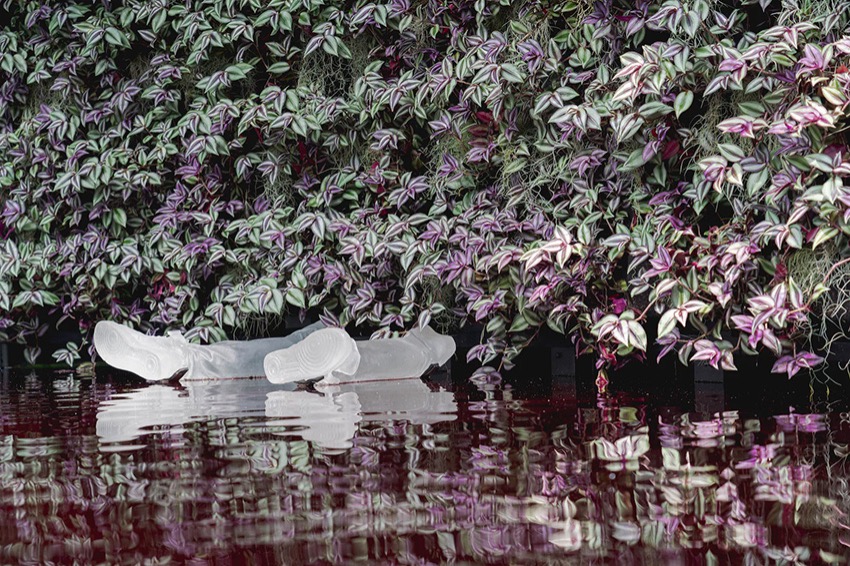Contemporary art is witnessing a growing trend in incorporating plants as a medium and a source of inspiration. The rise of plants as artworks has created opportunities for discussing social issues, and gardens, along with landscapes, offer public spaces to explore sustainability and social justice. Ultimately, this trend serves as a reminder that plants, similar to humans, possess deeper layers and inherent political significance.
Ebony G. Patterson’s recent show at the New York Botanical Garden features life-size sculptures of vultures surrounded by blood-red plants, exploring the tension between control and unpredictability in nature. This marks the artist’s first venture into working directly with living materials in her art practice.
For Patterson, plants also represent a connection to the political and historical aspects of enslaved Black bodies. Her work, “…fester…,” presents an installation of floral wallpapers alongside embedded black cast-glass thistles, prompting reflections on exploitation, origins, and labor.
Brooklyn-based artist David Kennedy Cutler’s work involves layered canvases bursting with lifelike depictions of popular houseplants, symbolizing our attempts to contain nature and present an idealized version of ourselves.
Rashid Johnson’s mixed-media installation, Antoine’s Organ, uses houseplants to explore the concept of domesticity.
The Isabella Stewart Gardner Museum in Boston hosted a group show called “Presence of Plants in Contemporary Art,” showcasing a wide range of artists using living materials to address issues like climate change and interdependence.
Featured Image: Ebony G. Patterson, …things come to thrive…in the shedding…in the molting… at the New York Botanical Garden (2023). Courtesy of NYBG





